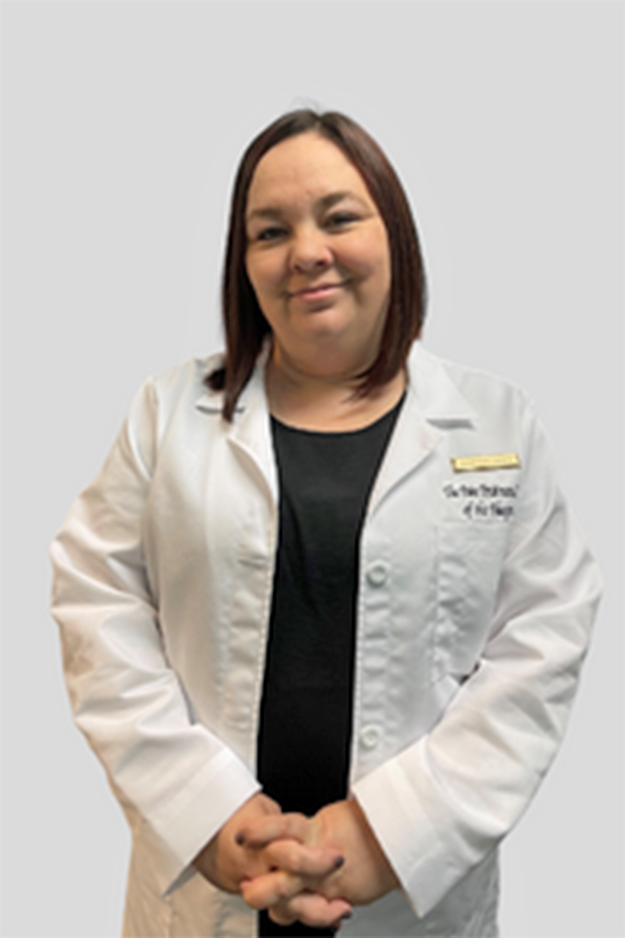Long time, board-certified anesthesiologist joins legacy Pain Treatment Center of the Bluegrass
LEXINGTON When The Pain Treatment Center of the Bluegrass in Lexington was founded by anesthesiologist Ballard Wright, MD, in 1988, pain management was relatively new. From Wright’s one man, one office practice, The Pain Treatment Center of the Bluegrass (PTC) has evolved into a practice with three buildings in Lexington, a satellite clinic in Somerset, and a partnership with CHI Saint Joseph Health to provide pain services at their hospitals in Berea, Bardstown, and London. The medical staff has grown to ten physicians with board certification in pain management and medical specialties in neurology and neuroimaging, anesthesiology, physical medicine and rehabilitation, palliative care, family practice, and addiction medicine. Working in collaboration with the physicians, the Center employs over a dozen mid-level providers and a behavioral medicine staff, as well as nurses and medical assistants.
In May 2023, Richard Lingreen, MD, joins The Pain Treatment Center of the Bluegrass. “The Pain Treatment Center is aware of their legacy of being pioneers in the specialty of pain treatment in Kentucky,” says Lingreen. “They are a patient-oriented practice and seek to provide excellent, compassionate care to the citizens of Kentucky. During my interview, I knew that I wanted to be part of that. They want to be the best.”
Lingreen is board certified in five different specialties and subspecialties of anesthesiology, pain medicine, and addiction. Lingreen was the first practitioner in Kentucky to perform MILD, a minimally invasive procedure for alleviating pain caused by lower lumbar spinal stenosis, and he proctored many physicians on the procedure. Along with the MILD procedure, Lingreen will perform other interventional techniques to help alleviate his patients’ pain. But, “I hope to continue to work with PTC to grow their addiction medicine program, as so many pain patients not only suffer from pain but also suffer from opioid use disorder,” he says.
Opioid Use Disorder and Its Symptoms
Opioid use disorder (OUD) is a long-lasting condition that can lead to disability, relapses, and even death. According to the DSM-V, opioid use disorder is a pattern of opioid use that causes problems or distress. When patients are using medications in higher doses, or for longer periods of time than recommended; are having a persistent desire or cravings for opioids; are having trouble getting things done at work, school, or at home due to opioid use; or are experiencing recurring interpersonal or social problems due to the use of opioids, then they need help. The Pain Treatment Center of the Bluegrass combines behavioral therapy and medication assisted therapy to help patients with opioid misuse or abuse.
From Treating Pain to Addiction
Opioid use disorder is a public health condition that affects everyone. Addiction to opium-derived pain medicine can strike anyone regardless of income, social position, education, or family background. “Due to genetics, opioids can make some people feel euphoric, which unfortunately can make it more likely that they misuse or abuse the medication,” says Lingreen. To avoid the possibility of opium addiction many surgeons have altered the type and the amount of pain medicine they prescribe to post-op patients, often using non-opiate analgesics. That change in pain management care is working well, says Lingreen, but it doesn’t work in all cases, and many people need opioids to manage their acute or chronic pain. However, as he states, you have to be aware of the fact that “people have different tolerances and individual pain receptors which react differently to different dosages. With some patients, the more you raise their dosage, the more you can raise their tolerance, which leads to addiction.”
Medication Assisted Treatment
Working in addiction medicine is a process. “I like addiction medicine because you can really change people’s lives for the better,” says Lingreen. The Pain Treatment Center of the Bluegrass has multiple means to facilitate the addiction recovery process, including medication-assisted treatment (MAT) and psychological counseling using cognitive behavioral therapy (CBT).
Medication-assisted treatment comes in the form of three medications: buprenorphine/ naloxone (also known as Suboxone, Zubsolv, Subutex, or Sublocade), naltrexone (also known as Vivitrol, ReVia, or Depade), or methadone.
“I like addiction medicine because you can really change people’s lives for the better.” — Richard Lingreen, MD
According to the CDC, these medications work to “normalize the brain chemistry, relieving cravings and in some cases preventing withdrawal.” Lingreen will work in tandem with Kay Wilson, DNP, APRN, to determine which and when patients are candidates for MAT. “You have to give people a substitute that reduces the addiction craving while they get their lives back on track,” says Lingreen.
Behavioral Therapy for Opioid Use Disorder
Cognitive behavioral therapy is an important aspect of opioid use disorder treatment. These therapies involve encouraging sufferers to change, teaching them about the treatment, and helping them prevent relapses. Evidence-based opioid use disorder treatment involves several facets, including:
- Diagnosis and treatment plans personalized for the patient and their family
- Long-term management
- Professionally-administered behavioral therapies
- Recovery support, including community services, peer support specialists, and mutual aid groups.
Psychiatric nurse practitioner Joannie Cook, PMHNP-BC, who works for The Pain Treatment Center of the Bluegrass, has worked with addiction medicine patients for 10 years and has seen much success with her patients. Cook notes that “It takes reflection for a person to know that they have an issue with opioids and the courage to do something about it. I am here to help patients with that reflection and give them the tools they need to combat addiction.”
In his experience Lingreen says that CBT works well when incorporated with the medical substitutes like Suboxone for opioid-based pain drugs. Both Lingreen and Cook know that patients will often relapse during the treatment process, and they are in it for the long haul with the patients. “During the treatment program, as the patient’s brain plasticity changes and the receptors modify, they need the cognitive changes more than the medicines. It takes time, maybe a year or two or three, but when we see the shift from higher dosage of the substitutes to more therapy, that’s when we know we’re making progress and changing lives,” says Lingreen.
It’s About the Patient
During his twenty-five years of treating patients, Lingreen has learned much about pain treatment and recovery. He says, “You become a friend of the patient. You’re still the doctor, but you develop a bond with them that’s amazing. They get their lives back. They get their children and jobs back. They are so appreciative and thankful. They tell me how grateful they are for what I’ve done for them. But I tell them, ‘You did it, I was just there to show you how.’ We do that one patient at a time.”






